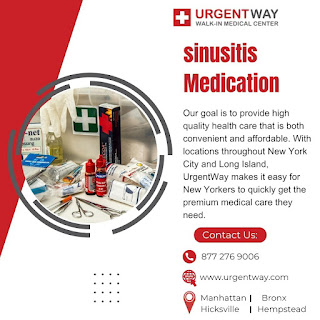Does Red Light Therapy Fat Loss Require a Specific Diet or Exercise Regimen?
Does Red Light Therapy Fat Loss Require a Specific Diet or Exercise Regimen?
Red light
treatment has become a viable choice in the search for efficient and
non-invasive fat loss techniques. But in order to get the most out of red light
therapy for fat loss, is there a particular diet or exercise plan that must be
followed? In plain terms, we'll examine the intriguing realm of red light
treatment, its effects on fat loss, and whether combining particular food and
exercise practices can improve the outcomes.
Comprehending Red Light Therapy in
Relation to Fat Loss:
Low-level red
or near-infrared light is used in red light therapy, often referred to as
low-level laser therapy (LLLT) or photobiomodulation, to increase cellular
activity. Red light treatment is thought to have an impact on adipose (fat)
cells in the context of fat reduction, encouraging the release of stored fat.
The Red Light Therapy Science:
Cellular Stimulation: The energy-producing mitochondria in
cells absorb red and near-infrared light that penetrates the skin.
Enhanced Production of ATP: As a result of this absorption, more
adenosine triphosphate (ATP) is produced, which boosts cellular energy.
Activation of Cellular Processes: Cellular processes are triggered,
which affects several physiological reactions. These processes include the
release of nitric oxide and reactive oxygen species.
Fat Cell Response: In response to this stimulation,
adipocytes, or fat cells, release fatty acids that facilitate the metabolism of
fat.
Red light therapy and diet: how they work together to lose fat
Rich in Nutrients Diet:
Red light
therapy can improve fat reduction at the cellular level, but a diet high in nutrients
is still essential. Eating entire meals, such as fruits, vegetables, lean
meats, and whole grains, gives you vital nutrients that help your metabolism
and general health.
Calorie Equilibrium:
Red light
therapy may accelerate metabolic processes, but it's crucial to keep your
calorie intake in check. Losing fat is facilitated by creating a deficit in the
energy intake compared to the energy expenditure of the body.
Drinking plenty of water:
Maintaining
proper hydration is beneficial to all body processes, including metabolism.
Water consumption helps the body absorb nutrients more efficiently and
facilitates digestion.
Cut Back on Processed Foods:
Weight gain
can be attributed to processed foods that are heavy in harmful fats and added
sugars. Selecting complete, unprocessed foods helps the body's inbuilt
processes for burning fat.
Portion control and moderation:
A balanced
approach to fat loss can be supported by preventing overeating by exercising
moderation and paying attention to portion sizes.
Red light
therapy and exercise's role in fat loss
Exercise for the Heart:
Cardiovascular
exercises that increase energy expenditure and support total fat reduction,
like walking, jogging, or cycling, are a good complement to red light
treatment.
Strengthening Exercise:
Strength
training techniques that increase lean muscle mass raise resting metabolic
rate, which promotes long-term fat loss.
Regularity in Exercise Schedule:
Frequent
workouts, whether they involve strength or aerobic training, have a more
substantial and long-lasting effect on body composition.
Exercise Following Red Light Therapy:
Following a
red light treatment session, exercise can help you take advantage of the
enhanced energy generation and metabolic activity that the therapy has
encouraged.
HIIT (High-Intensity Interval
Training) Integration:
Short bursts
of intensive exercise are interspersed with rest intervals in high-intensity
interval training (HIIT), which can bolster fat-burning effects and complement
red light therapy's metabolic advantages.
How to Get the Most Out of Red Light Therapy for Losing Fat:
Regular Sessions of Red Light Therapy:
Consistent
attendance yields cumulative advantages. Creating a regular timetable increases
the probability of achieving favorable outcomes.
Calorie Awareness and a Balanced Diet:
Red light
treatment and a healthy diet work together to make sure the body gets the
nutrients it needs for optimum performance. Monitoring your calorie consumption
helps you lose weight overall.
Customized Workout Program:
Creating a
workout regimen based on individual interests and fitness levels improves
efficacy and adherence.
Following Therapy: Activities
Adding mild
activity to your post-red light therapy regimen, such going for a quick stroll,
may increase your body's metabolic reaction.
A Holistic Approach to Living:
Red light
therapy is one component in a more comprehensive lifestyle program. A
comprehensive approach to fat loss includes getting enough sleep, managing
stress, and maintaining general wellbeing.
UrgentWay
uses FDA-approved Zerona lasers to deliver exceptional results & provides a
safer alternative to painful and invasive fat-reduction surgeries.
Zerona laser
is the first non-invasive body contouring method that removes excess fat from
the hips, waist, and upper arms. Our board certified providers will discuss
your health and counsel you on preventative care and healthy choices.
Conclusion:
Red light
therapy is a new and exciting area of fat removal that offers a non-invasive
way to improve body composition. Red light treatment itself has the potential
to promote cellular processes linked to fat burning; however, its efficacy can
be further increased by combining a regular exercise regimen with a nutritious
diet. Together, a healthy, nutrient-rich diet and regular exercise have a
synergistic effect that supports the body's natural fat-burning processes.
It's critical
to view fat loss as a holistic process and to acknowledge that no one technique
can fully replace the advantages of a balanced lifestyle. As with any
health-related plan, seeking advice from medical professionals or fitness
specialists guarantees individualized advice that is in line with specific
needs and objectives. by combining regular exercise, a conscientious diet, and
red light treatment.
.png)


.png)
Comments
Post a Comment